How to Grow an Orange
The life of an orange tree
Hardier Are from citrus trees that don’t grow good fruit
Root stalk, such as Trifoliate, are more resistant to disease and are better able to absorb nutrients from the soil, however, the trees have large thorns and the fruit is hardly edible.
heardier, as in more reistant to disease.
All oranges have different
The eating fruit that is on the graft, the root stalk is more disease, less likely to survive. Gives you a tree that is the best of both worlds
Most citrus are grafted onto a heartier root stalk. This is for several reasons.
• Some trees, such as the Trifoliate, are more resistant to disease and are better able to absorb nutrients from the soil, however, the trees have large thorns and the fruit is hardly edible.
because the top of the tree produces a better fruit, makes a more stable plant, able to produce the kind of fruit we want with a stable, disease resistant root stalk.
Grafting: splicing the piece of tree onto a root stalk to that will produce that fruit
- When an rancher plants a tree it is about 18” tall with a handful of leaves
- A year later is about 3 feet tall and looks like a tree.
- Most citrus have a crop in 3 years; mandarins can be profitable by then.
- The navel tree needs to be bigger to support the larger fruit, therefore need 5-7 years.
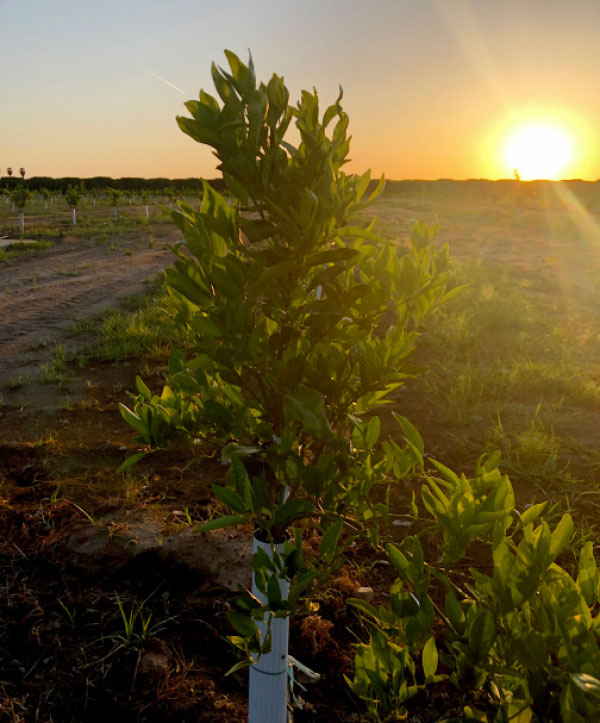
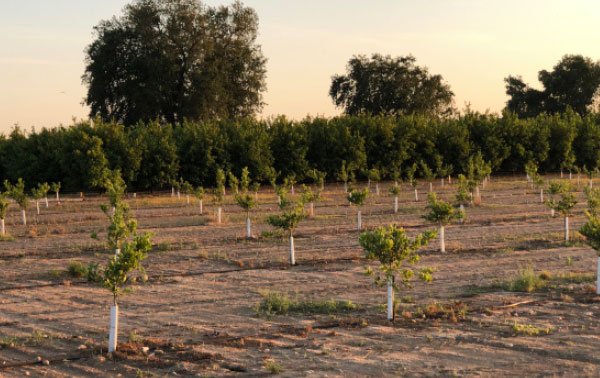
Pest control
Citrus fruit are not damaged by pests.
However, pests do damages the beauty of the fruit causing spotting and discoloration, which consumers find unappealing.
At Stull Ranches, we use only pesticides that are specific to the pests involved and does not affect the other creatures. Stull Ranches trees thrive with life, such as butterflies.
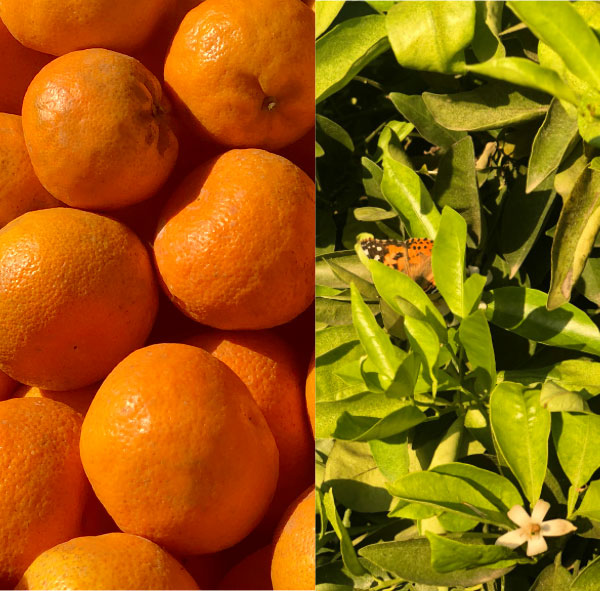
Fertilizer
As nutrients are absorbed by the roots and used by the tree they need to be replenished. The nutrients that trees absorb through the roots are water, nitrogen, sulphate, and phosphorus. Trees do need carbon, but that is actually absorbed through the air in the form of carbon dioxide.
We choose not to use organic fertilizers as it takes MORE fertilizer to get the same nutrient value and organics don’t have the same precision.

Weed control
One of the main reason for weed control is that weeds can interfere with watering. They will also steal the nutrition from the fertilizer.
We do carefully disperse weed killer when necessary.
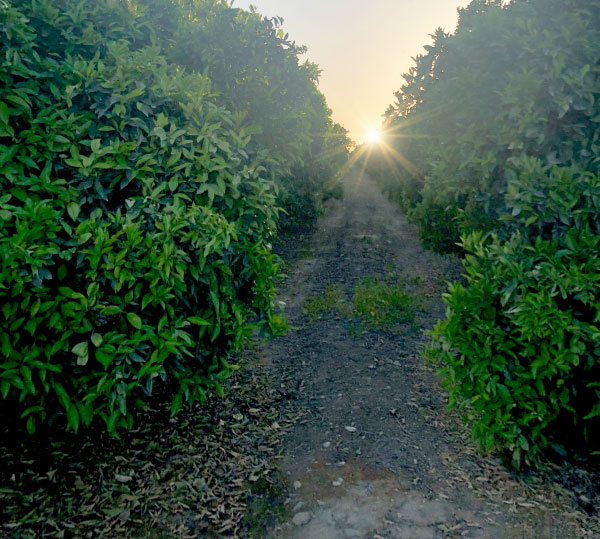
Frost control
The single-most threat to an orange crop is frost.
Oranges cannot take a freeze. They can take a heat, but one frost will kill a crop.
When your citrus is dried out rather than juicy, it has been frost damaged.
The fruit can get as low as 26˚ Fahrenheit, depending on the time of year. As fruit ripens in the winter, a hard freeze in November can be more devastating than one in December. The more sugar in the fruit, the lower the temperature it can withstand.
At 26˚, it won’t kill the tree, but the tree can get frost damage. Below 18˚ it starts burning the tree.
Measures taken during cold evenings to help keep the temperature up.
Most times we just need a degree or two for these processes to keep the fruit above the danger zone of 26˚.
1. Wind machines from above
At about 30 feet above the ground the air is a little warmer than on the ground.
The wind machine blows the warmer air down to warm up the air around the trees.
2. Running water from below
The irrigation system to water the trees use a fan jet. Water is a fantastic heat sink as it absorb and releases heat in the freezing process.
If you lose a crop to freeze, you still have the get the oranges off the tree:
• The old fruit gets in the way of the new crop
• The old fruit encourages mold growth
In the 20 years of Stull Ranches, we’ve lost crops 2 years due to cold weather.
It was too cold for the wind machines and irrigation systems to overcome the cold.
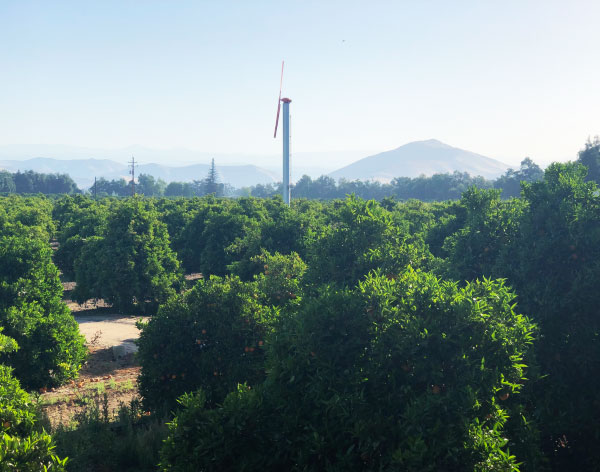
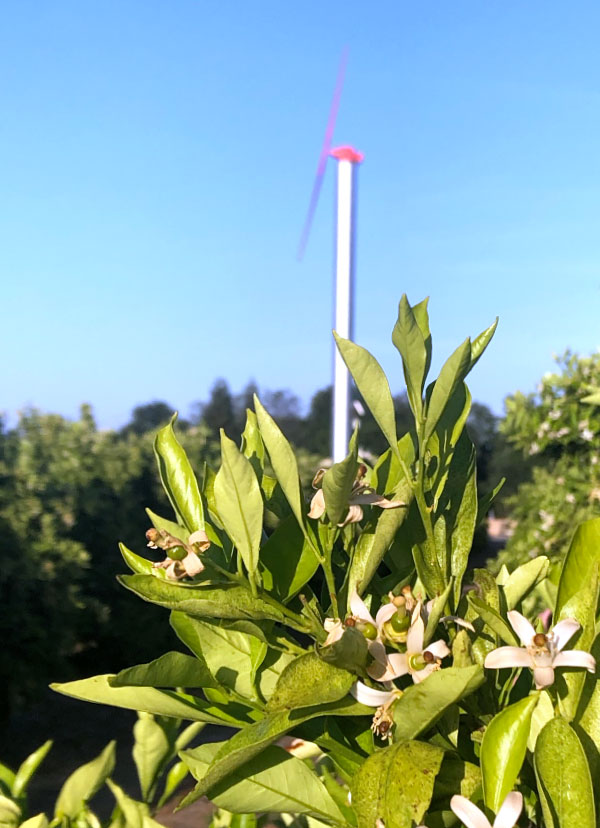
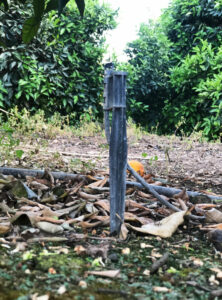
Pruning
There are several reasons why we prune citrus trees regularly:
- Getting rid of dead wood allows for new growth
- Clearing space between the rows to care for the plants
- Controlling the size and height of tree for ease of picking

My father always said that if you want oranges, you have to go where the oranges grow.
–Terrence Howard
